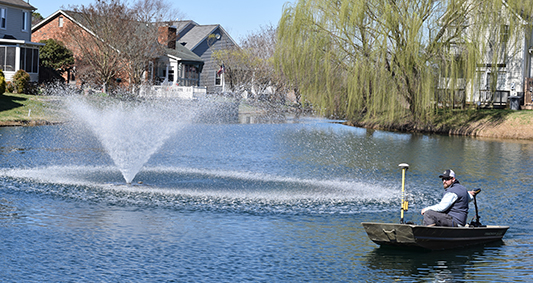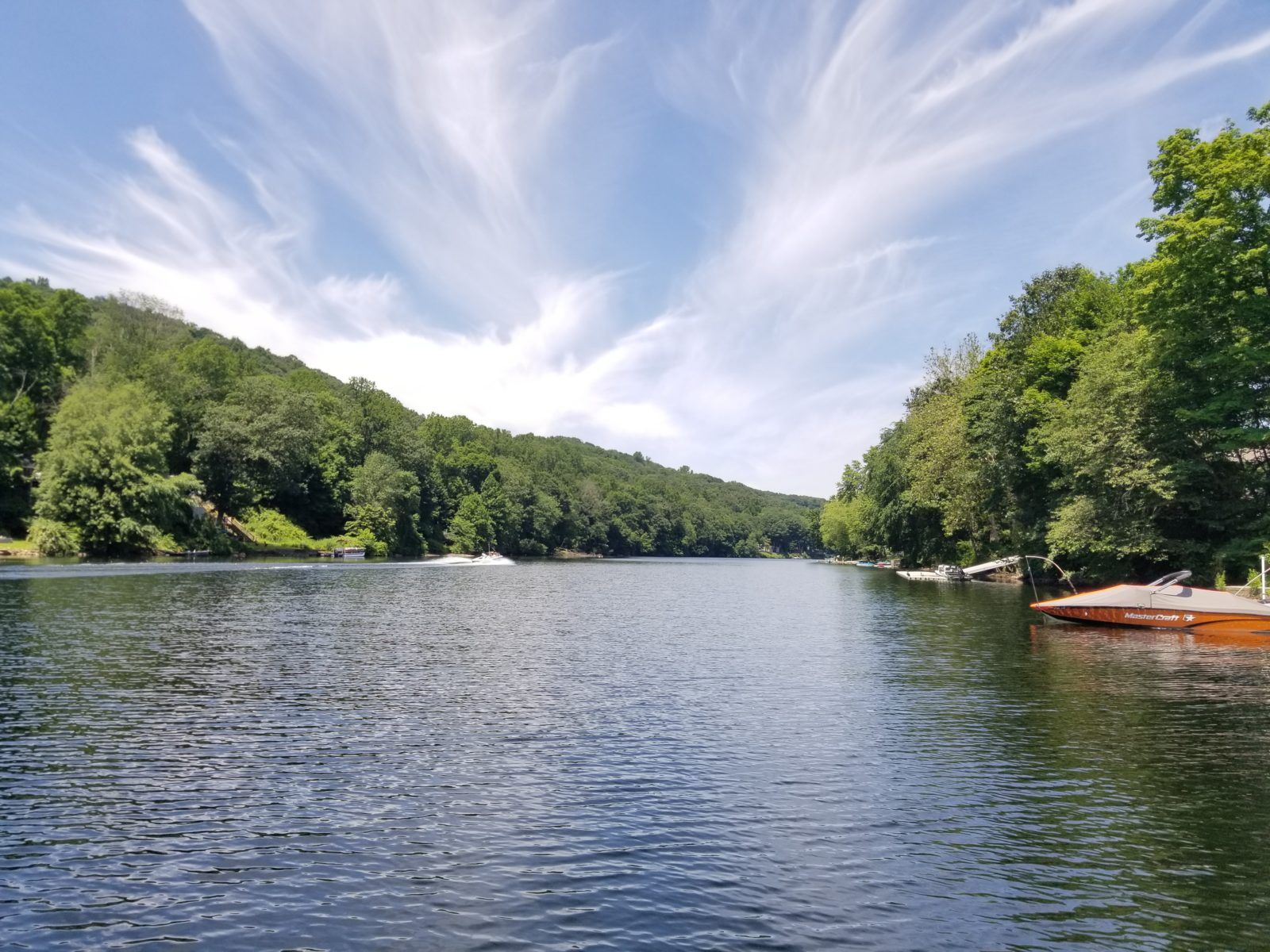Bathymetric Mapping: An Overlooked Component of Lake Management
December 13th, 2018

If you own or manage a lake or pond, your goals may include improving aesthetics, enhancing water quality and strengthening the health of your aquatic ecosystem. While many of the strategies used to achieve these goals are implemented in the spring and summer, it’s never the wrong time to get started. In fact, one beneficial and often overlooked tool is lake mapping—and now is a great time of year to utilize it!
What is lake mapping?
Lake mapping, or bathymetry, involves the measurements of water depth, volume and amount of collected sediment on the bottom of a waterbody. These parameters can reveal quite a lot about what’s happening between the bottom of a lake or pond and the surface, and help waterbody managers and owners make important short- and long-term decisions about the future of a waterbody. The equipment required to perform a bathymetric study includes a hydro-acoustic transducer, GPS receiver and a software platform to union the water depth and location data.
How often should bathymetric studies be conducted?
Surveys should be conducted every two to three years and survey the entire waterbody, with extra-time spent documenting the inlet and any areas of concern. Similar to the way regular water quality monitoring can indicate impairment of a waterbody, regular bathymetric studies can provide an early-warning alert to changes on the waterbody’s bottom, out of sight.
How is lake mapping data utilized?
Any significant sediment deposits can be addressed in a timely manner with a minor project and costs, as opposed to ignoring or being unknowing of it until a significant capital investment is required to remedy the situation. Small sediment accumulations can be removed via hydro-rake or hand-held suction dredge units with the projects lasting only a matter of days, depending on the area and volume of sediment to be removed. Unidentified problems that persist unabated would likely require a full-scale dredging project and all the associated permitting.
Accurate bathymetric data is also crucial when using EPA-registered herbicides and algaecides to control undesirable vegetation and algae. By using bathymetry to calculate the exact volume of a waterbody, a freshwater management professional can determine the precise amount of product needed to most efficiently target a nuisance or invasive species, while minimizing the impact to native species. More precise dosing of herbicides and algaecides can lead to reductions in the amount of product utilized over time, translating into cost savings that can be reallocated to previously unfunded areas of concern.
Can this data also be used for fisheries management?
Yes! In addition to stormwater and recreational lakes and ponds, fisheries can benefit extensively from bathymetric studies. The best fishermen always seem to know where to cast to catch the “Big One.” Whether it is the rocky outcropping on the southwestern shoreline or the edge of waterlilies near the inlet, they know where the best spots are to entice a lurking fish onto their line. Fisheries biologists can help interpret the bathymetric data and identify the best habitat existing within the waterbody or, alternatively, determine what is lacking and provide recommendations to improve the habitat. Using bathymetry to fill in a gap in data, the fishing experience can be improved and a more positive outcome can be achieved.
Bathymetric studies are affordable and valuable components to incorporate into the regular management program of a waterbody. Consider incorporating a bathymetric study in to your freshwater management plan to enhance the long-term health and success of your waterbody.
Contact the experts at 888-480-5253 for all of your lake, pond, wetland and fisheries management needs.
SOLitude Lake Management is a nationwide environmental firm committed to providing sustainable solutions that improve water quality, enhance beauty, preserve natural resources and reduce our environmental footprint. SOLitude’s team of aquatic resource management professionals specializes in the development and execution of customized lake, pond, wetland and fisheries management programs that include water quality testing and restoration, nutrient remediation, algae and aquatic weed control, installation and maintenance of fountains and aeration systems, bathymetry, shoreline erosion restoration, mechanical harvesting and hydro-raking, lake vegetation studies, biological assessments, habitat evaluations, and invasive species management. Services and educational resources are available to clients nationwide, including homeowners associations, multi-family and apartment communities, golf courses, commercial developments, ranches, private landowners, reservoirs, recreational and public lakes, municipalities, drinking water authorities, parks, and state and federal agencies. SOLitude Lake Management is a proud member of the Rentokil Steritech family of companies in North America.










